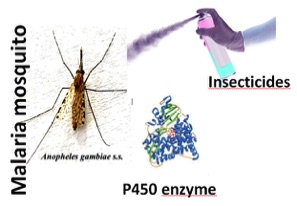




REDOX ENZYMES FOR BIOMEDICAL APPLICATIONS
Prof. Gianfranco Gilardi, Prof. Sheila Sadeghi,
Dr. Gianluca Catucci, Dr. Oleksii Skorokhod
Cytochromes P450 and flavin-containing monooxygenases can be important target for the development of inhibitors for the treatment of important diseases.
The research is focused on two topics.
- Human flavin-containing monooxygenase 3 (hFMO3) catalyses the oxygenation of a variety of compounds including drugs and dietary compounds. It is the major hepatic enzyme involved in the production of the N-oxide of trimethylamine (TMAO). TMA is derived from fish as well as the degradation of dietary choline and carnitine by gut bacteria. Clinical studies have shown a correlation between TMAO and cardiovascular disease and the inhibition of TMAO production can be an interesting tool for the treatment of atherosclerosis. Moreover, some polymorphisms in hFMO3 gene also result in lower TMAO production and lead to trimethylaminuria (also known as fish odour syndrome). This condition is associated with lack of hFMO3 N-oxygenation activity resulting in large amounts of TMA being excreted.
- P450 enzymes from mosquitoes which transmit infections and their response to insecticides.
The research aim is to identify and characterize the determinant isoforms of Anopheles gambiae, Aedes aegypti and Culex quinquifasciatus cytochromes P450, particularly responsible for insecticide metabolism. We plan to heterologously express it in E.coli, purify and characterize it, perform inhibitory test leading to potential new pesticides lead compounds.
In descriptive field studies the enzymes associated with mosquito resistance have already been reported to be CYP4G16, CYP6Z1, CYP12F2 and some others. Among these CYP12F2 is the less well known, and yet it is the isoform more similar in both Anopheles and Aedes species. For these reasons we will start an investigation on this form with the purpose of allowing to interrupt the infection route of important infective agents, as malaria parasite, dengue and Zika virus.
Success in the development of this project will lead to the design of new key molecules to circumvent insecticide resistance for these important mosquito species, contributing to vector-borne infectious diseases control.

